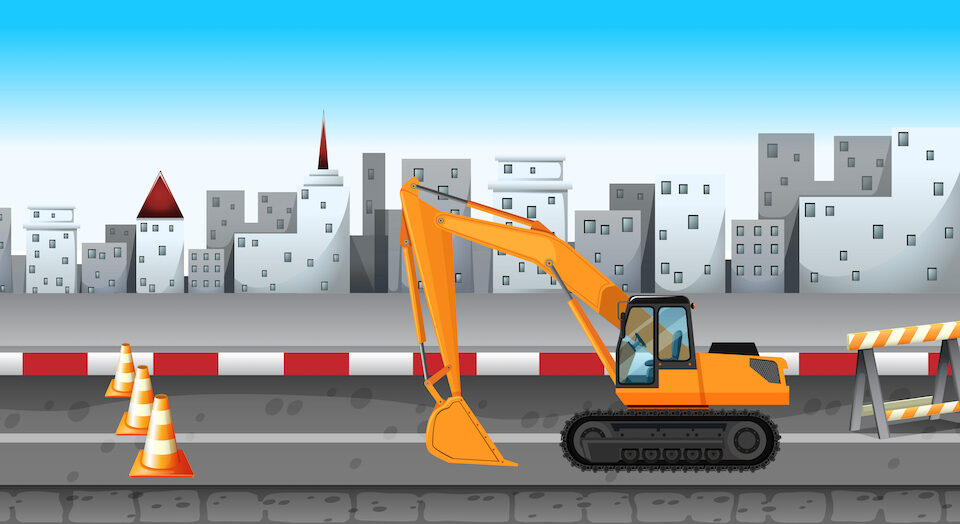- Mail:
- info@digital4pro.com
The 4 enabling elements for the development of 5G networks

I 4 elementi abilitanti per lo sviluppo delle reti 5G
11 Agosto 2020
Food: Tarsia Trevisan, caporedattore di Classlife
28 Agosto 2020According to ITU¹ guidelines, 5G networks “should have a peak speed of 20 Gb/s for the downlink and 10 Gb/s for the uplink. Latency in a 5G network could go up to 4 milliseconds in a mobile scenario and can be 1 millisecond in ultra reliable low latency communication scenarios. Not only will people be connected to each other, but also cars, cars, city infrastructure, public safety and more“.
Of course, the pervasive diffusion of 5G networks requires at least four elements for it to become reality.
Fiber optic infrastructures
Contrary to what many are led to believe, wireless technologies are not always an alternative to wired technologies², but they can complement them. This is all the more true in the case of 5G: the high transport capacities aggregated by the 5G cells require the achievement of fiber optic cells in the mobile cells in order for these volumes of traffic to be transported to the rest of the network. Indeed, in modern mobile radio networks, data travel for the most part on wired networks, using wireless technologies only for the last kilometers or hundreds of meters.
It is therefore the fiber optic cabling of 5G mobile cells that determines the real performance of the network as a whole and therefore the value of the user experience.
The time and investment required for this area cabling action will influence the development of new generation wireless networks.
Realization of microcells
Territorial coverage with mobile networks is currently achieved mainly through Macrocelle, consisting of cluster of antennas mounted on a pole and capable of serving thousands of users within a radius of several kilometers.
However, the future of territorial coverage is made up of smaller cells: Femtocelle, Picocelle or Microcelle³. Easier to install, with lower powers and cheaper to maintain, smaller cells serve fewer users. They can be connected to the rest of the network (backhauling connections) through the use of wireless point-to-point connections or, better, thanks to the optical fiber.
In rural areas, smaller cells can be used to extend mobile radio coverage operated by traditional radio base stations, while in densely populated areas they can extend their capacity in terms of number of users and performance.
Spectrum availability
In addition to the availability of fiber optic connections up to the cells and the scaling of the coverage rays, the 5G must be able to count on the availability of high frequencies in order to operate. The higher frequencies, which correspond to reduced wavelengths, however, need to operate in optical visibility (line-of-sight) between the mobile device and the cell and entail a lower coverage radius.
In Italy, the Ministry of Economic Development (MISE), with the Ministerial Decree signed on 5 October 2018, approved the revision of the National Frequency Distribution Plan in accordance with the provisions on the efficient use of spectrum and transition to 5G technology. . The National Frequency Distribution Plan (PNRF) was published in the ordinary supplement no. 49 to the Official Journal of 19 October 2018, n. 244⁴.
The National Frequency Distribution Plan establishes, at national level and for peacetime, the attribution to the various services of the frequency bands covered by the plan (between 0 and 3,000 GHz), to indicate for each service within the individual bands the governmental authority responsible for frequency management, as well as the main civil uses.
FM⁵sound broadcasting uses frequencies between 87.5 MHz and 108 MHz, Bluetoooth⁶ uses frequencies around 2.4 GHz, Wi-Fi⁷ around 2.4 GHz and 5 GHz, satellite TV between 13 and 18 GHz. These latter frequencies already need to operate in optical visibility and the quality of the communication channel can be adversely affected by atmospheric events and dense foliage.
For 5G in Italy, frequencies between 694 MHz and 27.5 GHz will be the protagonists of very high capacity transmissions.
Bringing 5G into buildings through wired networks
Although 5G’s high frequencies require direct line-of-sight for connectivity (i.e. that the antennas can be seen optically with each other), fixed wireless will allow cellular coverage within buildings without the use of wired lines.
Fixed wireless antennas are installed on top of buildings to communicate with small cells or towers equipped with a Macrocella nearby. While these fixed wireless antennas must maintain line of sight with the neighboring cells, they are able to extend cellular coverage within the buildings below.
These antennas can be connected via fiber to the internal Picocelle or Femtocelle, which are used to transmit wireless coverage to mobile users indoors. The wireless signal can also be converted to conventional Wi-Fi with the use of ad hoc designed devices. The ability to convert a cellular signal to Wi-Fi can allow wireless operators to compete with traditional ISPs⁸.
Already in 2018 in the USA Verizon Communications, which provides internet access to its users, has implemented fixed 5G wireless services in the cities of Houston, Indianapolis, Los Angeles and Sacramento. These services are an alternative to internet access provided via fiber, while maintaining comparable speeds between 300 Mb / s and 1 Gb / s.
¹ The International Telecommunication Union (ITU) is the international organization that sets standards for telecommunications and the use of radio waves.
² By wired networks we mean those made with physical means such as copper or optical fiber.
³ Intendiamo per reti cablate quelle realizzate con mezzi fisici quali il rame o la fibra ottica.
³ https://www.digital4pro.com/en/2020/06/23/5g-from-macrocells-to-femtocells/
⁴ https://www.gazzettaufficiale.it/eli/gu/2018/10/19/244/so/49/sg/pdf
⁵ https://en.wikipedia.org/wiki/FM_broadcasting
⁶ https://en.wikipedia.org/wiki/FM_broadcasting
⁷https://en.wikipedia.org/wiki/Bluetooth
⁸ Internet Service Provider, or provider of Internet services, indicates a subject with general authorization for offering the public access to the network and telecommunications services pursuant to art. 25 Legislative Decree 1 August 2003 n. 259 Electronic Communications Code.
Bibliografy:
- https://www.mise.gov.it/index.php/it/comunicazioni
- 5G Technologies, Ajit Singh
- https://www.ngmn.org/
- https://www.itu.int/en/Pages/default.aspx




